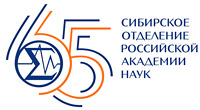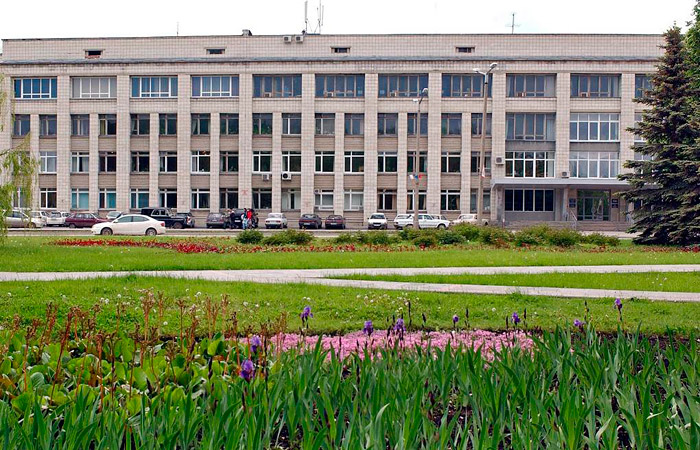
Electronic english version since 2022 |
The newspaper was founded in November 1957
| |
Siberian scientists for the future of Russia
At a meeting with journalists dedicated to the 65th anniversary of the SB RAS Сhairman, Academician Valentin Nikolaevich Parmon named the strategic priorities of the Siberian Branch and said what new solutions for medicine, agriculture, electronics, telecommunications, space monitoring of the Earth and transport were proposed by Siberian scientists.
 On 18 May, 1957, by Decree of the Council of Ministers of the USSR No. 564, a new branch was developed in the structure of the USSR Academy of Sciences - the Siberian Branch, organised on the initiative of Academicians M.A.Lavrentiev, S.A.Khristianovich, S.L.Sobolev. Today it is the largest regional branch of the Russian Academy of Sciences. It is located in six regions, three territories and five republics of the Siberian Federal District with a total area of about 11 million square km. Scientific centers of the SB RAS are in Novosibirsk, Tomsk, Krasnoyarsk, Irkutsk, Yakutsk, Ulan-Ude, Kemerovo, Tyumen, Omsk, there are separate institutes in Barnaul, Biysk, Kyzyl, Chita and other cities.
On 18 May, 1957, by Decree of the Council of Ministers of the USSR No. 564, a new branch was developed in the structure of the USSR Academy of Sciences - the Siberian Branch, organised on the initiative of Academicians M.A.Lavrentiev, S.A.Khristianovich, S.L.Sobolev. Today it is the largest regional branch of the Russian Academy of Sciences. It is located in six regions, three territories and five republics of the Siberian Federal District with a total area of about 11 million square km. Scientific centers of the SB RAS are in Novosibirsk, Tomsk, Krasnoyarsk, Irkutsk, Yakutsk, Ulan-Ude, Kemerovo, Tyumen, Omsk, there are separate institutes in Barnaul, Biysk, Kyzyl, Chita and other cities.
As of 4 March 2022, the Siberian Branch of the RAS consists of 200 members of the RAS, including 99 Academicians and 101 Corresponding Members, 93 Professors of the RAS (of which 17 are Corresponding Members of RAS). In total, the scientific organizations of the SB RAS, subordinate to the Ministry of Education and Science of Russia, employ 11 472 researchers, of which 2922 are without a degree, 2339 are Doctors of Science and 6043 are Candidates of science. The total number of employees is 31 140 people. Academician V.N. Parmon is Head of SB RAS.
The Siberian Branch of the Russian Academy of Sciences provides scientific and methodological management to 86 research organisations: institutes and federal research centers working in the fields of mathematics and computer sciences, energy, mechanics and control processes, nanotechnology and information technology, in the field of physics, chemistry, biology, earth sciences, economic and humanitarian, as well as interdisciplinary research at the intersection of sciences. JINR has long-term fruitful cooperation with many of them. Today we publish material on scientific achievements and research prospects of the Siberian Branch of the Russian Academy of Sciences, prepared by the publication "Science in Siberia".

Improving the quality of life of cancer patients
"Improving the quality of life of people in the full breadth of this concept should be put in the first place," Head of the SB RAS said.
New technologies in the treatment and rehabilitation of patients with malignant tumors were named as one of the many manifestations of this work. Director of the Research Institute of Oncology of the Tomsk Research Medical Center of the Russian Academy of Sciences, Academician Evgeny Lkhamatsyrenovich Choinzonov spoke about them. "It is important for us to ensure not only a cure for cancer, but also a subsequent return to society, a decent standard of living," the scientist emphasized. "Some operations in the head and neck area have crippling consequences: for example, the removal of the upper or lower jaw. Together with colleagues from other institutes, we have developed a technology for restoring facial geometry with bioceramic implants. This is possible only through the use of the achievements of various sciences: not only medicine and biology, but also chemistry, physics, biology, materials science and so on." For the development of the technology for postoperative restoration of the patient's appearance, Academician E.L.Choinzonov as part of the team was awarded the State Prize of the Russian Federation in the field of science and technology in 2020.
Touching upon the topic of import substitution in medicine, Evgeny Lkhamatsyrenovich noted the subordination of this term to the need for imports: "We should not talk about replacing something inaccessible, but in principle about the production of competitive domestic products and services." At the same time, Evgeny Choinzonov presented how, with the assistance of Rosatom, it is planned to overcome the difficulties in the development of the latest oncological radiopharmaceuticals, which was carried out with the participation of the Swedish University of Uppsala. "The solution has almost been found, and by the end of the year we will inform you that the drugs previously created together with our Swedish colleagues will be introduced. There is no doubt about this, but the implementation period will be somewhat delayed."
Affordable and varied food for all
One of the main priorities of the SB RAS, Academician Valentin Parmon also called the development of scientific foundations for providing fellow citizens with affordable, varied and high-quality food. "Under the conditions of sanctions, the problem of food security has become more acute," Chairman of the Joint Scientific Council of the Siberian Branch of the Russian Academy of Sciences for Agricultural Sciences, Head of the Scientific Area of the Siberian Federal Scientific Center for Agrobiotechnologies of the Russian Academy of Sciences Academician Nikolai Ivanovich Kashevarov emphasized. "One of the factors to ensure it is the availability of modern, competitive varieties of cultivated plants and breeds of domestic animals."
N.I.Kashevarov informed that only in the last five years, Siberian agricultural scientists have created over 150 new varieties of agricultural crops, including those that are critical from the standpoint of food security. "As a result, 95% of the sown areas of oats, 84% of winter and 80% of spring wheat are now occupied by varieties of Siberian selection," the scientific director of the SFSC RAS stated. He also announced the readiness to introduce new breeds of domestic animals into the agro-industrial sector and the successes of veterinary science.
Cycloplane as the transport of the future
Deputy Director of the Institute of Thermal Physics named after V.I. S. S. Kutateladze SB RAS Candidate of Physical and Mathematical Sciences Artur Valerievich Bilsky spoke about the further prospects for the development of the Cyclolet project. Under a contract with the Russian Foundation for Advanced Study, a flying machine demonstrator was constructed in two years, confirming the advantages of this type of drone: low noise, high maneuverability and the ability to use unsuitable sites, including those with an inclination of up to 90 degrees.
According to Artur Bilsky, the further development of the project in two areas is currently worked out in cooperation with the FPI. The first is the creation of a prototype device weighing about 30 kilograms for the transportation of small loads and video surveillance, the second is the creation of a prototype cyclocar, a flying car weighing more than two tons with cyclic propulsion devices. "We made a large propulsion device, tested it in wind tunnels and showed that if a large car is equipped with such propulsion units, it will fly," the scientist said. "This is an exotic prospect, but nonetheless feasible in the coming years."
A.Bilsky emphasized that on the way of the air vehicle to practical application, the main problems will be not technological, but legal: the regulation of road and air traffic is currently incompatible.
Deputy Director of the IT SB RAS informed that other possible applications of cyclic propulsion are discussed together with the FPI experts. "Such an apparatus can not only fly, but also swim," says A.V.Bilsky. - That is, in principle, it is possible to construct a floating apparatus on cyclic propellers. It can also work not to generate traction, but, on the contrary, to convert incoming energy, such as wind, or to work on a stream like a damless hydroelectric power station.
Russian semiconductor technologies
Deputy Director of A.V.Rzhanov Institute of Semiconductor Physics, SB RAS Doctor of Physical and Mathematical Sciences Alexander Germanovich Milekhin spoke about the three latest developments of the scientific team. The first is a 2000 x 2000 pixel photodetector array that is used for remote sensing of the Earth in the infrared range. "It is sensitive to thermal radiation and in any weather, for example, it generates a high-intensity image in fire locations," A.G.Milekhin explained. As to the scientist, such matrices can be produced only in three places: in two American companies and at the Novosibirsk Institute. Chairman of the SB RAS Academician Valentin Nikolaevich Parmon added that more than ten institutes throughout Siberia, as well as from Belarus, are involved in the development of reliable systems for monitoring the earth's surface.
Another advanced development is high-power microwave photodiodes for transmitting large amounts of data in satellite communications networks (connection of terrestrial antennas with a control center) and for multi-channel television broadcasting when transmitting high-definition video in real time. These devices were also constructed in collaboration with Belarusian colleagues, the joint results this year were awarded the Academician V.A.Koptyug Prize. "The scheme for creating such photodiodes is quite complicated, it includes several technological stages," Alexander Milekhin said. "Today, there is a request for such structures from some telecommunication companies in Russia, since these products are produced only at our institute." High technologies also include semiconductor lasers with a vertical cavity created with the participation of the IPP SB RAS for optical data transmission and when used in miniature quantum frequency standards. "Such a kind of clock shows a frequency stability of the order of 10-11, that is, their error is 1 second in 4000 years," A.Milekhin said.
"Today the Russian industry associated with radio electronics works intensively with our research institutes and leading universities, aiming to produce not only the domestic element base, but also to establish the production of the pure substances necessary for this," Valentin Parmon added. "There is a very wide scope of activity here that can be localized primarily in Tomsk and Novosibirsk."
"The SB RAS, like no other regional branch of the Academy of Sciences, is aimed at practical results," the Academician V.N.Parmon summed up.